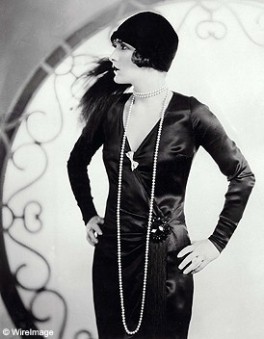Five years after his first novel, This Side of paradise, Fitzgerald had The Great Gatsby published. One could draw a parallel between the shining life he led and the turbulent existence of his characters, as Fitzgerald did it himself: “ Sometimes I don’t know whether Zelda and I are real or whether we are characters in one of my novels. Turbulent is quite appropriate a word to describe the daily life of Jay Gatsby, the eponymous character. This mysterious host throws fabulous parties in his impressive mansion, where it is no unusual thing to come across a famous actress or a well-known politician. But behind all this luxury and splendor there is nothing but emptiness, and a deep, sad feeling of loneliness. The narrator, a quiet, observant Middle Westerner “inclined to reserve all judgments”, to use his own words, is both fascinated and repelled by the East, where he settled to try his luck in the financial field. Gatsby, his neighbor, embodies this sparkling world.
At first, Nick, the narrator, doesn’t even know what this neighbor everybody talks of looks like. It’s only after strolling about at some of his magnificent parties that he ends up meeting Gatsby, quite by chance. A friendship is born, thanks to Nick’s discrete nature.
However, Gatsby is too mysterious a man for things to go smoothly. No one knows who he really is and where he comes from. Which of the rumors about his past are true? Where did he get his wealth? A gorgeous girl from his past happens to be the reason for his settling east of New York, on the island where the story takes place. Is there any chance this romantic obsession with a married woman can lead to anything other than unhappiness? What will remain of the splendor when trouble and death come to claim their due? Who among the bunch of leeches and alleged friends that surround Gatsby can be relied on?
The feeling that pervades this book is one of melancholy. The characters are lost in existence, strolling about in life like shadows, drifting with nothing to get ahold of. An image that struck my attention is that of a gigantic advertisement placard featuring a blue-eyed charlatan, that ends up embodying the insistent glare of some unforgiving deity.
“But above the grey land and the spasms of bleak dust which drift endlessly over it, you perceive, after a moment, the eyes of Doctor T.J. Eckleburg. The eyes of Doctor T. J. Eckleburg are blue andgigantic–their retinas are one yard high. They look out of no face but, instead, from a pair of enormous yellow spectacles which pass over a nonexistent nose. Evidently some wild wag of an oculist set them there to fatten his practice in the borough of Queens, and then sank down himself into eternal blindness or forgot them and moved away. But his eyes, dimmed a little by many paintless days under sun and rain, brood on over the solemn dumping ground. »
*
* *
« Standing behind him Michaelis saw with a shock that he was looking at the eyes of Doctor T. J. Eckleburg which had just emerged pale and enormous from the dissolving night.
“God sees everything,” repeated Wilson.
“That’s an advertisement,” Michaelis assured him. Something made him turn away from the window and look back into the room. But Wilson stood there a long time, his face close to the window pane, nodding into the twilight.”
